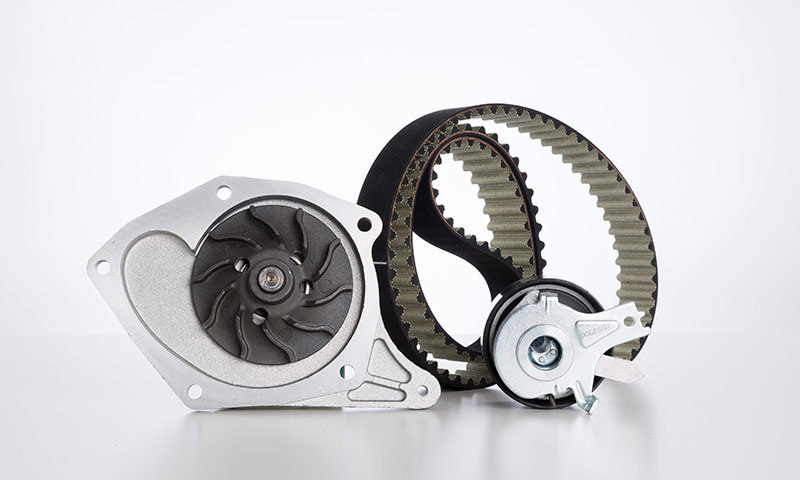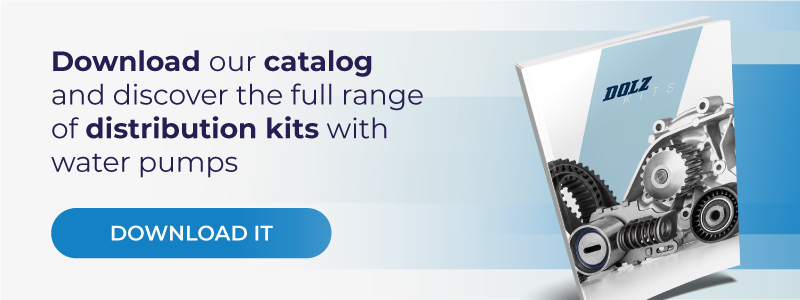Read on and check out all necessary to know about the timing belt and why its replacement is an absolute must-do.
Why do timing belt need to be changed?
It is an often overlooked part of the car but it plays an important and essential role.
Just like many other car parts, timing belts are subject to wear and tear and need to be replaced at regular intervals.
The timing belt ensures some of the engine’s most vital moving parts operate in a perfectly synchronised sequence at maximum efficiency. As the name suggests, it is responsible for the timing of your engine but it will wear down over time.
When should the timing belt be replaced?
Replacing it is part of regular auto maintenance. Dolz recommends to check your owner’s manual to find out when you should change your timing belt.
Unfortunately, there are some problems you might find with your timing belt:
If it starts to peel off, shows cracks, is softening or hardening, or has oil or water contamination, it is time to replace the belt.
What happens when a timing belt fails?
Over time, the belt can lose teeth and slip. It can even been snap and as a result that can be fatal for the engine. When this happens, the car stops and you have to get the car towed because it won’t start until the engine is “re-timed”, and the belt replaced.
When a timing belt breaks, it causes damage to the valves and piston and can lead to catastrophic engine failure.
So, a replacement on schedule will greatly reduce the chance of a broken timing belt (and all the damages that accompanies it).
How is a timing belt kit replacement carried out?
The timing belt is usually very difficult to inspect and it is necessary to get pretty deep into your engine to perform the task as well, so the replacement is a labour-intensive process. Make sure you have the time and space to complete the job.
If you have the right tools and skills, replacing it isn’t a difficult task:
Read more: Understanding timing belt components and how to maintain it
How to install a timing belt kit in 12 easy steps
STEP 1. Drain and clean the cooling circuit.
STEP 2. Disconnect the negative battery cable, as well as the fuel pipes and the intake pipe.
When necessary, remove any accessories such as the power steering pump, alternator or air compressor by powering to gain access to the timing belt.
STEP 3. Remove the bolts or screws holding the timing belt cover.
STEP 4. Remove the distributor cap (if any)
STEP 5. Remove the crankshaft pulley
STEP 6. Then just align the timing marks.
STEP 7. Lock the timing pulley.
Verify proper alignment of crankshaft and camshaft timing marks.
STEP 8. Loosen the mounting bolts holding the belt tensioner
Make sure the tensioner pulley is free from damage such as dents or cracks.
STEP 9. Now it’s time to remove the timing belt.
STEP 10. Remove the water pump.
Clean the area of the pump housing on the motor to avoid any residue.
Apply a little silicone or sealant to facilitate sealing of our pumps ONLY if supplied without a gasket.
Tip to remember: It is important to correctly assemble each of the components, as it can damage the pump or even the motor.
STEP 11. Reinstall the tensioner. Always respecting the vehicle manufacturer’s assembly instructions for each type of roller.
Make sure there is no oil leak in the area near the belt.
STEP 12. Place the new belt.
After installation, always take a few extra minutes to check the proper functioning of the pump and bearings and make any necessary adjustments. One of the most important things is to correctly adjust the tension, if it is too tense or not enough the belt could be quickly broken.
Refill the cooling system with quality coolant to ensure the service life and performance of both the water pump and the cooling circuit in general. If you ‘run dry’ the cooling system, this could cause thermal shock and irreversible damage.
Dolz recommends the use of coolants with liquid organic additives and a minimum concentration of 40% ethylene glycol.
3 things you should know about the timing belt replacement
With that in mind, check out these tips to remember:
- There are some warning signs that your timing belt might soon fail. Abnormal squeaking, rattling noise from engine bay or burning smell from engine are the most common timing belt symptoms.
- On some engines, the water pump runs off the timing belt – therefore, it is a good idea to have this inspected and replaced when the timing belt is off the engine, having them replaced at the same time can save on labour costs further down the track, and will ensure everything is in good working order.
- Don’t hold off on timing belt replacement. The best way to avoid future problems is to make sure that you have it replaced when the owner’s manual recommends you to. You know, prevention better than cure.
Don’t miss our Step-By-Step video demonstration!
…yes, we have!


